[Editor’s Note: Today’s post is excerpted from the December 2020 edition of the OE Watch, published by the Foreign Military Studies Office, TRADOC G-2. Some have likened last year’s brief but decisive flare up in this long simmering conflict to the Russo-Japanese War and the Spanish Civil War, harbingers of the military technology revolutions manifested in the twentieth century’s First and Second World Wars. Others have likened it to 1973’s Arab-Israeli Yom Kippur War and its repercussions across modern combined arms operations, resulting in the U.S. Army’s embrace of AirLand Battle doctrine and the concomitant “Big Five” modernization. Today’s post explores initial Russian and Turkish perspectives on what transpired with their respective proxies in this remote region of the Caucasus and the potential ramifications for the Operational Environment and the changing character of warfare — Read on! (Please review this post via a non-DoD network in order to access all of the embedded links — Thank you!)]
Early Lessons-Learned from Nagorno Karabakh (p. 23)
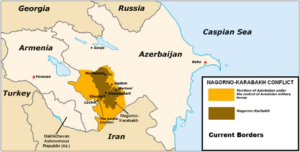
OE Watch Commentary: Russian defense officials have closely observed the fighting between Azerbaijan and Armenia over the separatist region of Nagorno Karabakh. While it is too early yet to derive a full set of lessons-learned, some Russian observers are already drawing preliminary conclusions from this conflict. In the accompanying excerpt from the popular daily Komsomolskaya Pravda, military journalist Victor Baranets points out a few lessons that he believes today’s Russian military ought to take from this fight.
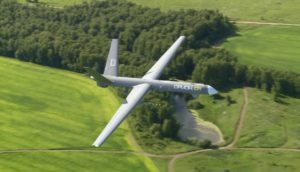
First and foremost, Baranets argues that Russia is “not yet very ready to fight against attacks by drone swarms,” bemoaning the fact that while “there are hundreds of light and medium-sized drones in the Russian military,” the military still does not possess “attack drones in the required quantity.” He sarcastically remarks that Russia’s enemies will not delay their attack simply because “our combat drones are not ready yet.” The author stresses that “military strategists are increasingly talking about drone swarms on the battlefield.” Baranets recalls an image of “the Russian army as a huge bear with nuclear fangs,” which was being “overcome by a swarm of biting bees with rocket stings.” Even though Baranets may not agree with this “caricature,” he argues that “the subtext is serious.”
Baranets only briefly describes the other systems that have played a prominent role in this conflict, pointing out “the active use of electronic warfare (EW), …super-modern means of artillery reconnaissance, a spotter plane…to direct the flock of drones at the target, and the active use of propaganda” were among the other measures that proved decisive on the battlefield. As it has in Ukraine and Syria, the Russian military will closely study the conflict in Nagorno Karabakh for important lessons-learned and incorporate them into its future operations. End OE Watch Commentary (Ray Finch)
“In the event of a war, you can’t say: ‘Wait, enemy, our combat drones are not ready yet.”
Source: “Готова ли Россия к войне дронов, как в Карабахе (Is Russia ready for drone war, like in Karabakh),” Komsomolskaya Pravda, 19 October 2020. https://www.kp.ru/daily/217196/4306709/
“Do we have our own drones and other ‘weapons of the future’ that we saw in the conflict in the South Caucasus? And most importantly, is there any protection against them? Here are the thoughts of our military observer, Victor Baranets.
I confess that until my eyes hurt, I watched the videos where Azerbaijanis playfully hammered Armenian tanks and cannons with drones. And now they also boast that in this way they destroyed the enemy’s military equipment worth as much as $1 billion. And this is almost 2 annual military budgets of Yerevan!
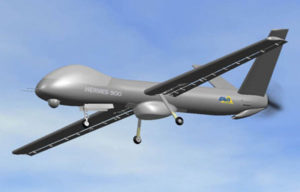
…Reflecting on all this, one wonders: is our native Russian army ready for such a war today?
…But military strategists are increasingly talking about drone swarms on the battlefield. And this is a fundamentally new element of modern warfare…. How to deal with such a threat? Is our army ready for it? And do we have our own modern drones?
There are hundreds of light and medium-sized drones in the Russian military (though it looks like thousands are needed). But they all carry out reconnaissance and guidance tasks. And what about the heavy attack UAVs?
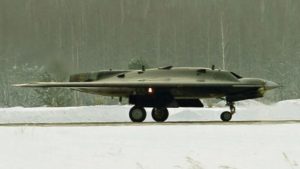
The heavy attack drone Hunter is now being tested… But it remains to be seen when the Russian army will be armed with such attack drones in the required quantity…. In the event of a war, you can’t say: “Wait, enemy, our combat drones are not ready yet …”
…Here’s the conclusion: we are not yet very ready to fight attacks from drone swarms.
…In general, the battle in Karabakh (seemingly in a very local conflict), in addition to the traditional methods of warfare, showed at once several new “elements” inherent in wars in the near future. Here are just 5 main ones:
…The massive use of drones not only for reconnaissance and targeting artillery at enemy positions, but also for high-precision strikes against its targets.
…However, as unprecedented, the active use of electronic warfare (EW), which often and tightly cut down the enemy’s command and control systems. …And on the battlefield, such super-modern means of artillery reconnaissance appeared, which made it possible to incredibly quickly detect a position (say, a cannon, tank or missile launcher of the enemy) and hit it so that the crew or crew did not have time to escape from the place of deployment.
…Specialists drew attention to one more important point: when unmanned aerial vehicles were striking, a spotter plane was in the air near the battlefield. He directed the flock of drones at the target.
…Well, and the active use of propaganda videos (some of which could have been cooked up even in advance).

In the West, artists like to depict the Russian army as a huge bear with nuclear fangs. Recently I saw in such a malicious picture the mighty bear, who is overcome by a swarm of biting bees with rocket stings. This may be a caricature, but the subtext is serious …”
A Turkish Perspective: Key Military Takeaways from the Nagorno-Karabakh Conflict (p. 27)

OE Watch Commentary: On 27 September, hostilities between Armenia and Azerbaijan erupted into a full-fledged war once again over the disputed territory of Nagorno-Karabakh. Turkey put its full support behind Azerbaijan, competing with Russia for influence in this region. The accompanying article from Turkey’s state owned news source Anadolu Agency, provides a Turkish perspective and highlights key military takeaways from this conflict.
After analyzing the conflict, the article underlines five lessons on the future of warfare. First, unmanned aerial vehicles (UAVs) pose a greater threat to conventional forms of warfare and military units “without adequate sensors, electronic warfare cover, and counter-drone weaponry.” Second, integrating land-based fire-support and UAVs provides superiority and achieves successful results. The Azerbaijani military has used UAVs in close coordination with artillery and rocket systems to achieve results.
The third lesson pertains to Armenia’s usage of “intra-war deterrence,” which the author describes as “controlling the escalation patterns within an ongoing conflict.” Armenia targeted Azerbaijan’s major population centers and critical national infrastructure with “ballistic missile and heavy multiple-launch rocket systems (MLRS) salvos’’ after facing “Azerbaijan’s technological superiority in the battlefield.” The author notes that the ongoing war indicates that intra-war deterrence will remain important and continue to dominate battlefields in the future.
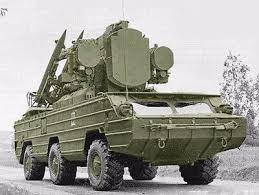
“Despite the drone age, military-geostrategic calculus still matters”
Source: “Five key military takeaways from Azerbaijani-Armenian war,” Anadolu Ajansi, 30 October 2020. https://www.aa.com.tr/en/analysisanalysis-five-key-military-takeaways-from-azerbaijani-armenian-war/2024430
“…Below, I listed five main observations to grasp the future of warfare…
Lesson 1: Without adequate sensors, electronic warfare cover, and counter-drone weaponry, traditional ground units are in Trouble.
The first lesson that the Azerbaijani–Armenian clashes showed is the vulnerability of traditional land units — armored, mechanized, and motorized formations — in the face of advanced drone warfare weaponry and concepts.
Lesson 2: Integration of land-based fire-support and drones looms large in modern warfare.
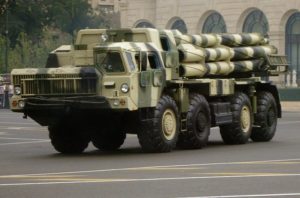
Syria has functioned as a warfare laboratory of the 21st century… Turkey and Russia are the two nations that developed ‘drone – artillery complexes’ during their Syria expeditions.
…
The Azerbaijani Armed Forces showed yet another example of the drone & land-based fire-support complexes. In many clashes, including night fighting, the Azerbaijani artillery and rocket systems fought in close coordination with drone warfare assets.
Lesson 3: Intra-war deterrence gain importance.
…the military-strategic dimension of the Armenian forces’ ballistic missile and heavy rocket use during the war deserves attention, highlighting the vital concept of “intra-war deterrence”.
Intra-war deterrence is, briefly, about controlling the escalation patterns within an ongoing conflict.
Overwhelmed by Azerbaijan’s technological superiority in the battlefield, Armenia has resorted to ballistic missile and heavy multiple-launch rocket systems (MLRS) salvos, targeting Azerbaijan’s major population centers. More importantly, the Russian manufactured SS-26 Iskander ballistic missiles in the Armenian arsenal makes the situation even more dangerous.
Overall, the… war showed that intra-war deterrence, and strategic weapons pertaining to this crucial concept, will continue to dominate battlefields in the coming years.
Lesson 4: Drones make good SEAD [Suppression of Enemy Air Defenses] assets against low-to-mid-range air defenses.
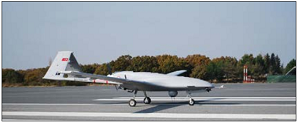
In the Syrian and Libyan battlegrounds, Turkey’s Bayraktar TB-2 drone has made a name for itself — the “Pantsir-hunter”– due to the successful kill scorecard of the Russian-manufactured Pantsir short-to-medium range mobile air defense systems. Following the Turkish drone warfare school’s footsteps, the Azerbaijani military has effectively used UAS, especially Bayraktar TB-2, to hunt down the Armenian air defenses. Of course, Roketsan made smart munitions, predominantly MAM-L, played a chief role in the suppression of enemy air defenses (SEAD) campaign. Within the first two weeks of the ongoing clashes, the Azerbaijani Armed Forces destroyed some 60 pieces of [Armenian] air defenses, mostly 9K33 OSA and 9K35 Strela systems.
…
Lesson 5: Despite the drone age, military-geostrategic calculus still matters.
While Azerbaijan’s technological edge and drone warfare have, so far, demonstrated a robust warfighting capability, the offensive campaign has had to utilize traditional concepts and weaponry to clear and hold the occupied territories. As the Azerbaijani push developed, Baku’s military planning transformed from a drone-driven, overwhelming war of attrition into a more combined arms warfare effort, pursuing a more balanced approach.
…
All in all, the… war shows that the traditional military-geostrategic calculus is still relevant. Conventional warfighting capabilities to clean, hold, and deny territory remains crucial.
If you enjoyed this post, check out the following related posts:
“Once More unto The Breach Dear Friends”: From English Longbows to Azerbaijani Drones, Army Modernization STILL Means More than Materiel, by Ian Sullivan
How Big of a Deal are Drone Swarms? by proclaimed Mad Scientist Zak Kallenborn
Jomini’s Revenge: Mass Strikes Back! by proclaimed Mad Scientist Zachery Tyson Brown
“Own the Night” and the associated Modern War Institute podcast with proclaimed Mad Scientist Mr. Bob Work
… review the webinar content (presenter biographies, slide decks, and notes) from our Mad Scientist Robotics and Autonomy series of virtual events and watch the associated videos [via a non-DoD network]
… explore the Operational Environment’s breadth and complexity in the near, mid-, and far terms:
Four Models of the Post-COVID World, The Operational Environment: Now through 2028, and The 2 + 3 Threat video
The Future Operational Environment: The Four Worlds of 2035-2050, the complete AFC Pamphlet 525-2, Future Operational Environment: Forging the Future in an Uncertain World 2035-2050, and associated video
… and see what we’ve learned about the Character of Warfare 2035
>>> REMINDER 1: We will facilitate the final webinar in our Mad Scientist Robotics & Autonomy Series of Virtual Events TOMORROW, Tuesday, 9 February 2021 (starting at 1300 EST):
Frameworks (Ethics & Policy) for Autonomy on the Future Battlefield  — featuring Dr. Philip Root (Deputy Director, Defense Sciences Office, DARPA), Alka Patel (Head of AI Ethics Policy at Department of Defense, Joint Artificial Intelligence Center), and Shawn Steene (Senior Force Planner for Emerging Technologies, OSD Strategy and Force Development) — will explore the ethical and policy considerations regarding autonomous systems on the future battlefield. Unmanned robotic and autonomous systems (both individual and swarming) will proliferate across the Operational Environment, presenting a host of opportunities and challenges for the U.S. Army. Join us in addressing these critical issues now so that the Army can incorporate insights into future force development and structuring.
— featuring Dr. Philip Root (Deputy Director, Defense Sciences Office, DARPA), Alka Patel (Head of AI Ethics Policy at Department of Defense, Joint Artificial Intelligence Center), and Shawn Steene (Senior Force Planner for Emerging Technologies, OSD Strategy and Force Development) — will explore the ethical and policy considerations regarding autonomous systems on the future battlefield. Unmanned robotic and autonomous systems (both individual and swarming) will proliferate across the Operational Environment, presenting a host of opportunities and challenges for the U.S. Army. Join us in addressing these critical issues now so that the Army can incorporate insights into future force development and structuring.
In order to participate in this virtual event, register here NOW! [via a non-DoD network].

>>> REMINDER 2: Mad Scientist is pleased to announce Competition and Conflict in the Next Decade, the next webinar in our continuing series of monthly virtual events – Are We Doing Enough, Fast Enough? – exploring our adversaries’ views on Competition, Crisis, Conflict, and Change on 23 February 2021 (starting at 1030 EST). Join our panel of subject matter experts from the Frederick S. Pardee Center for International Futures, University of Denver; Office of Strategic Planning and Policy, U.S. Secret Service; and more as they present their perspectives on this vital topic and then take questions from registered participants.
Register here [via a non-DoD network] to participate in this informative event!
>>> REMINDER 3: We have launched our Mad Scientist Writing Contest on Competition, Crisis, Conflict, and Change to crowdsource the intellect of the Nation (i.e., You!) regarding:
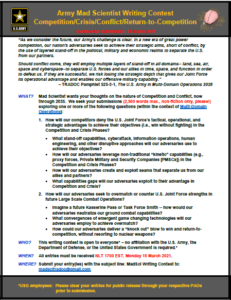
How will our competitors deny the U.S. Joint Force’s tactical, operational, and strategic advantages to achieve their objectives (i.e., win without fighting) in the Competition and Crisis Phases?
How will our adversaries seek to overmatch or counter U.S. Joint Force strengths in future Large Scale Combat Operations?
Review the submission guidelines on our contest flyer, then get cracking brainstorming and crafting your innovative and insightful visions! Deadline for submission is 15 March 2021.

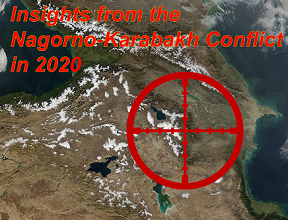


This is excellent analysis and very timely. It’s as if this was foreseen by the CMC 2018 Planning guidance.